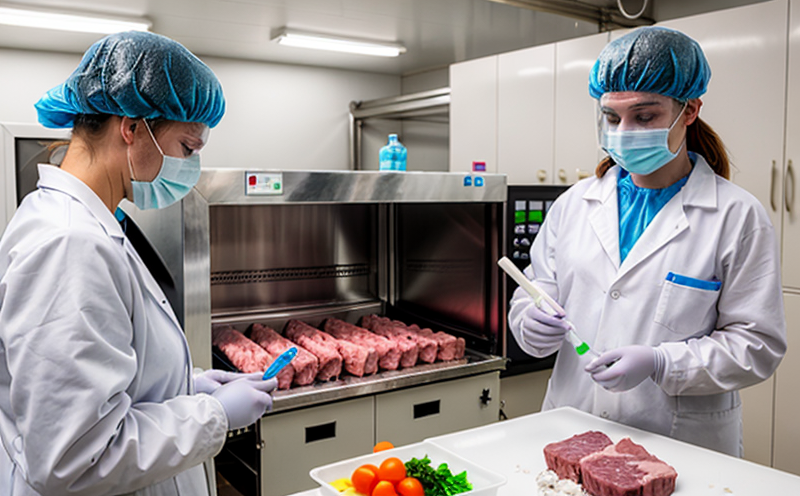FDA BAM Chapter 12 Staphylococcus aureus Testing
The FDA Bacteriological Analytical Manual (BAM) Chapter 12 is a comprehensive guide used by laboratories to accurately and precisely identify Staphylococcus aureus. This bacterium has significant implications in the dairy and meat industries due to its ability to cause foodborne illness. The presence of S. aureus can lead to contamination, which is why stringent testing protocols are essential for quality assurance and compliance.
The BAM Chapter 12 method uses a combination of enrichment broth and selective media to isolate and identify the target organism. This process ensures that the test environment is conducive to the growth of S. aureus while inhibiting other microorganisms, thereby increasing the accuracy of detection. The testing procedure involves several stages:
- Initial inoculation with the sample in tryptone soy broth (TSB) for 18-24 hours at 30°C to 35°C.
- Transfer of the enriched culture to Baird-Parker agar plates containing mannitol salt, which is selective for S. aureus.
- Incubation of the plates at 35°C to 37°C for another 18-24 hours.
- Variety of confirmatory tests including coagulase test and catalase test to confirm identity of colonies.
The result is a highly reliable identification of S. aureus, which is critical in ensuring food safety and regulatory compliance. This method is not only used for quality assurance but also helps in the early detection of potential contamination, allowing for timely interventions. In the dairy sector, this test plays a crucial role in preventing the spread of mastitis and other bovine infections that can compromise milk quality.
In the meat industry, the presence of S. aureus is linked to the risk of staphylococcal enterotoxin poisoning (SE). This testing ensures that food products meet strict safety standards set by regulatory bodies such as the FDA and USDA. The method's precision and reliability make it a cornerstone in the dairy and meat industries, contributing significantly to public health.
Quality and Reliability Assurance
The accuracy of FDA BAM Chapter 12 Staphylococcus aureus testing is paramount for maintaining high standards of quality assurance in the dairy and meat industries. Rigorous validation processes ensure that the methods employed are reliable and reproducible. Laboratories accredited to this standard undergo regular audits and certifications to uphold their credibility.
The use of international standards such as ISO 13485:2016 for quality management systems further enhances reliability. These standards ensure that all aspects of testing, from sample collection to final reporting, are conducted in a controlled and consistent manner. This commitment to quality not only meets but often exceeds regulatory requirements.
The importance of reliability cannot be overstated. Inconsistencies or inaccuracies can lead to product recalls, legal disputes, and loss of consumer trust. By adhering strictly to BAM Chapter 12 protocols, laboratories ensure that their findings are valid and trustworthy, thereby protecting the integrity of the products they test.
Competitive Advantage and Market Impact
- Innovation Leadership: Adherence to FDA BAM standards positions laboratories as leaders in innovation. By staying at the forefront of testing methodologies, they can introduce new technologies and practices that set industry benchmarks.
- Reputation Building: A reputation for reliability and accuracy enhances the laboratory's standing among clients and stakeholders. This trust fosters long-term relationships and repeat business.
The competitive landscape in dairy and meat microbiology is highly regulated, with strict standards imposed by regulatory bodies like the FDA and USDA. Laboratories that can consistently meet these requirements gain a significant edge over competitors who may not have the same level of expertise or resources. This advantage translates into increased market share and higher profitability.
Moreover, compliance with international standards such as ISO 17025:2017 for testing laboratories ensures that the results are internationally recognized and accepted. This global recognition opens up new markets and opportunities for growth. Laboratories that excel in this area can expand their client base to include multinational corporations and export-oriented businesses.





